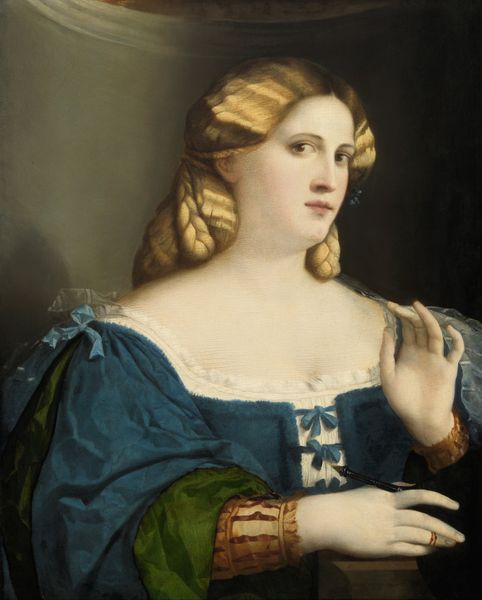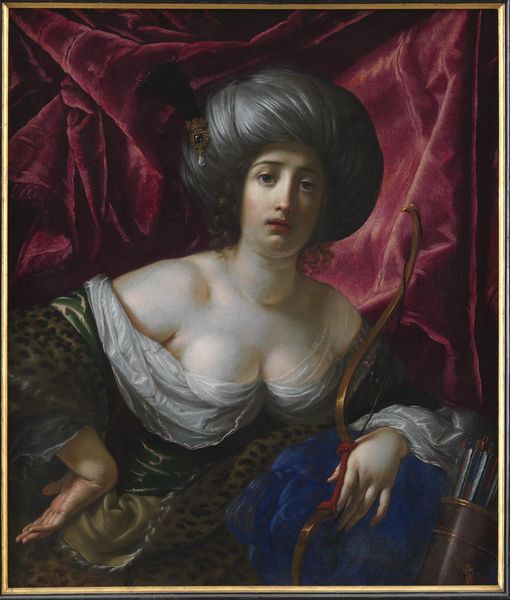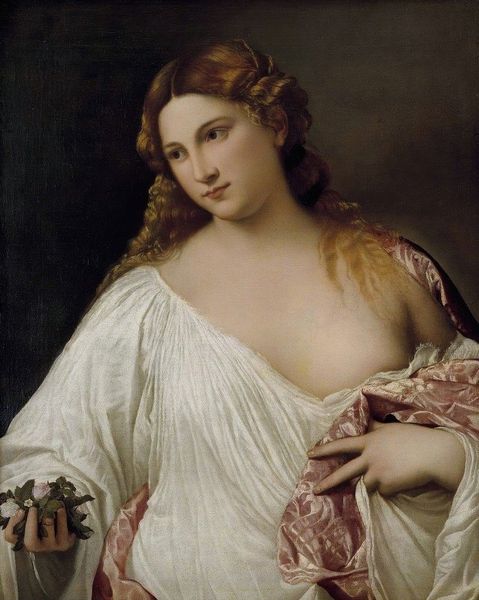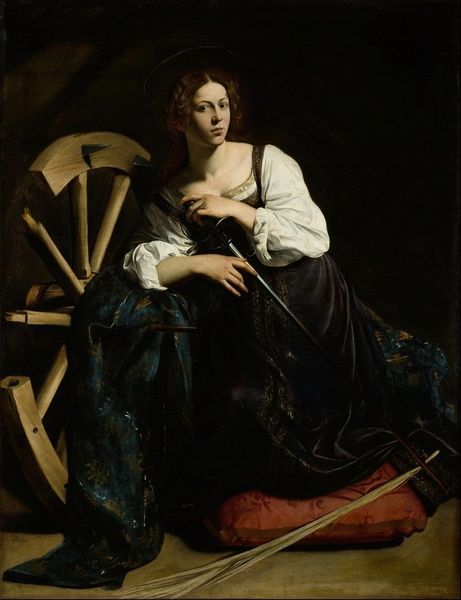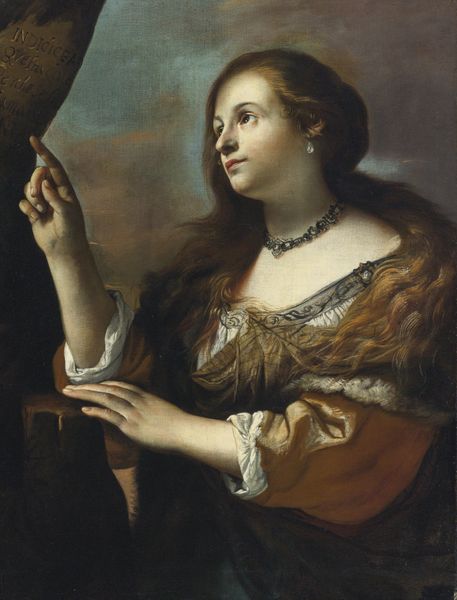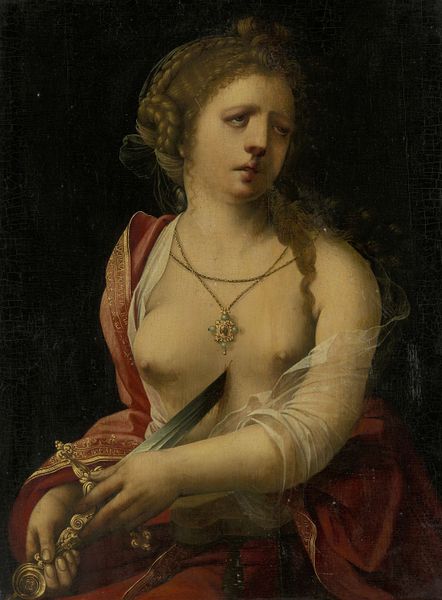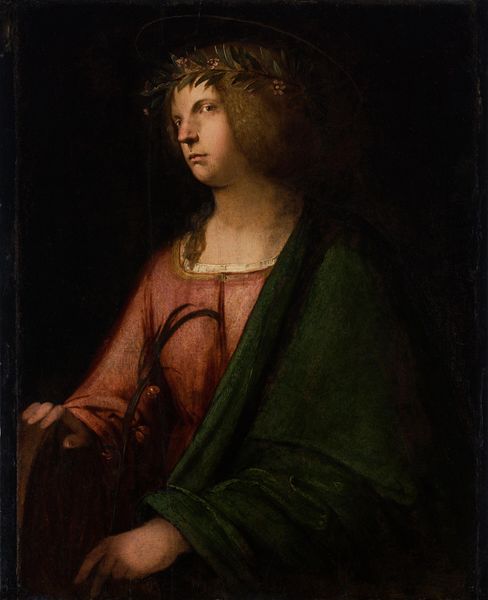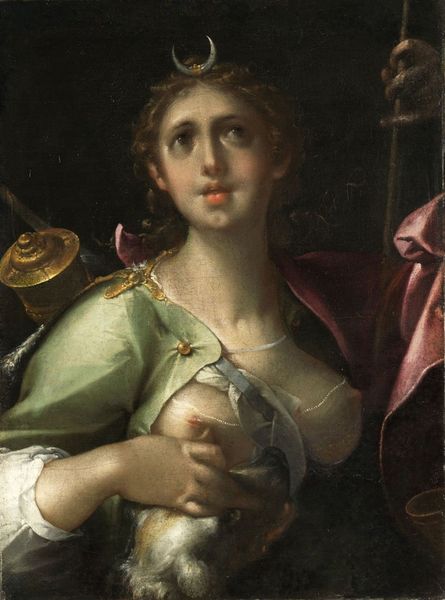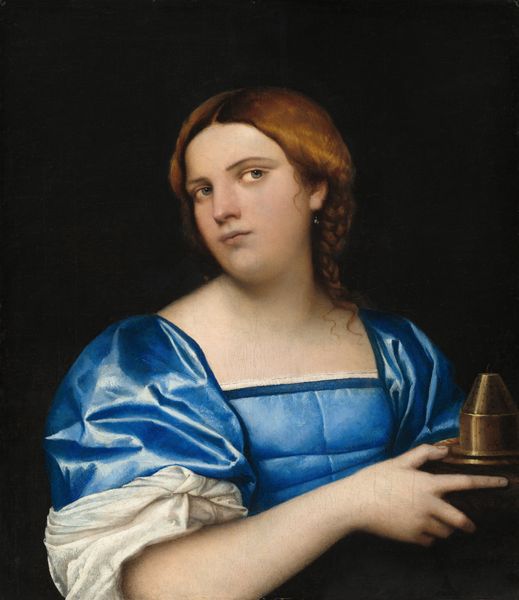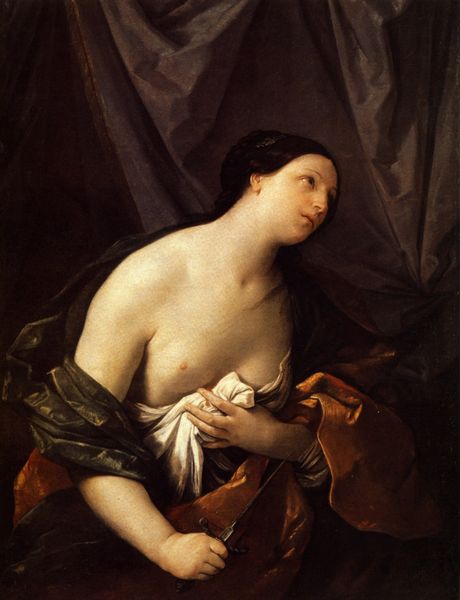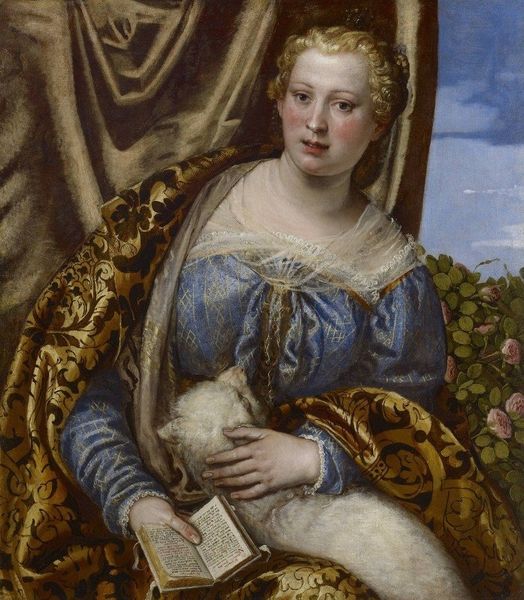
painting, oil-paint
#
portrait
#
venetian-painting
#
painting
#
oil-paint
#
figuration
#
history-painting
#
italian-renaissance
Dimensions: 95 x 80 cm
Copyright: Public domain
Curator: Here we have Palma Vecchio's "La Bella," created around 1520, a gorgeous example of Venetian painting currently residing in the Thyssen-Bornemisza Museum. Editor: She does radiate a quiet confidence, doesn’t she? A lovely painting. What really grabs me initially is the sheen on that fabric. How was that achieved? Curator: Through meticulous layering, most likely. Palma Vecchio, deeply entrenched in the Venetian school, exploited oil paints to create such striking textural richness and luminosity. I suspect he also employed the common venetian practice of tinting the canvas to subtly enhance the tonal range of his paints. Editor: Layering, tinting… fascinating! Thinking about the actual labor involved…grinding pigments, stretching the canvas, priming. The cost of the materials alone in the 16th century… it speaks to who could afford art, and who was excluded. It all begins and ends with economic and material access, no? Curator: I see your point entirely, though it feels incomplete. Surely Palma Vecchio’s artistic sensibilities have to come into play! I am instantly intrigued by the subtle mystery of her eyes and gesture towards the chest. What secret does she hold? The way she almost seems to both flaunt her luxury but also pull away. It teases at the interior life she’s so expertly concealing. Editor: But even the very mystery hinges on access. That elaborate, opulent garb, the masterful, almost photorealistic reproduction of silks—it’s not just technical prowess, it's a statement of power. It signifies status and is inaccessible to most, which informs its power. Curator: I won't deny that the opulence commands attention. Still, for me, "La Bella" manages to balance between objectification and interiority, allowing a brief glimpse of inner life to peek through. Editor: Interesting. And a welcome, but I find myself thinking about Venice's role as a major port for trade at the time. The textiles and pigments themselves probably came from far-flung corners of the globe! Her gaze feels a bit haunted, perhaps due to all the global exploitation on display, if only in art materials! Curator: It’s certainly sobering to contextualize the beauty with its complex social origins. Perhaps that duality is its true magic—holding the beautiful and the difficult in the same space.
Comments
No comments
Be the first to comment and join the conversation on the ultimate creative platform.
